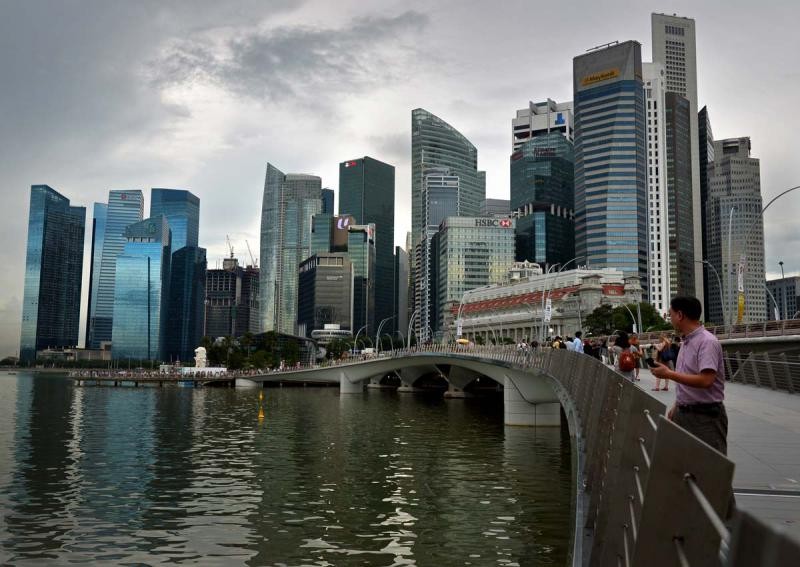Insolvency cases running high

The number of firms in Singapore being wound up after encountering financial trouble is set to be on a par with last year's number, which was the highest in 11 years.
These figures may even understate the levels of distress as such a formal procedure is always the last resort, industry observers note.
More companies seem to be going under, and the number of these cases could creep up to higher levels than during the global financial crisis, said Mr Chua Beng Chye, partner in the restructuring and insolvency practice at Rajah & Tann.
"What we are seeing now is a confluence of factors from various sectors leading up to a perfect storm - including escalating costs, record low oil prices, dampened property market and a slowing Chinese economy," he noted.
A total of 118 court winding-up petitions were filed in the first half of this year, compared with 129 in the same period last year, according to Ministry of Law figures.
And a total of 85 firms were actually wound up in the first half, compared with 97 previously.
In all, 255 court winding-up petitions were filed last year, while 189 firms were wound up. Both were the highest figures since 2004.
The continuing high figures come as no surprise amid a slowdown in economic growth. The Singapore economy grew 2 per cent last year, the slowest pace since the global financial crisis, and is tipped to grow just 1 to 2 per cent this year, noted UOB economist Francis Tan.
Six applications for judicial management - a less drastic step, leaving open the chance of regrouping - were filed in the first half of this year, compared with five in the same period last year.
Five of these orders were granted, up from four previously, according to figures from the Supreme Court.
Companies to have been wound up recently include boutique developer C&C Development. California Fitness is in liquidation.
Others which have opted for judicial management or are looking to restructure debt include energy sector victim Swiber Holdings, Technics Oil & Gas, interior design firm Serrano, Mercator Lines (Singapore) and Sembawang Engineering and Constructors.
Also, locally-listed China Fishery Group and its Hong Kong parent Pacific Andes Resources Development have filed for bankruptcy protection in the United States.
The sectors affected include shipping, oil and gas, commodities , construction and retail, said Mr Peter Greaves, restructuring leader at PwC Singapore.
Most of these sectors are set to face more heat in the coming months, he added. "Many of the current difficulties are rather unprecedented. Globally, shipping for example, is probably in its worst position since the early 1970s."
On a positive note, though, companies and their creditors appear to be more prepared to weather the storm, compared with during the global financial crisis.
"Complaints about the challenging global conditions have been on the cards since early last year. Many companies have already been preparing for the worst... (This) has helped both creditors and debtors," said Mr Azman Jaafar, deputy managing partner and head of corporate practice at RHTLaw Taylor Wessing.
Still, the number of cases of liquidation and its alternatives may not fully reflect the number of firms under financial pressure, said Mr Thio Shen Yi, senior counsel and joint managing director of TSMP Law.
"When times are very bad, companies just don't have the money. If creditors wind them up, and there is nothing, they still incur legal fees. So the creditors may not bother."
But in a situation where the economy is a bit better, creditors may make a court winding-up application as it could be an effective way of getting a debtor to pay up.
"In this environment, liquidation might be a last resort, or resorted to when there is suspicion of management wrongdoing. Certainly, among the local banks at least, you see greater sensitivity to the different types of restructuring options available," Mr Thio added.
So, to get a fuller picture of the levels of distress, we need to consider other negative indicators such as increasing debt levels or falling revenues or profits; and also consider when a firm's debt is maturing, noted Mr Greaves of PwC.
"The increasing trend in defaults in Singapore dollar denominated bonds also reflects the pain felt across a number of industries. Companies have to face a new normal of trading conditions, such that they may not be able to service existing debt levels."

This article was first published on August 30, 2016.
Get a copy of The Straits Times or go to straitstimes.com for more stories.